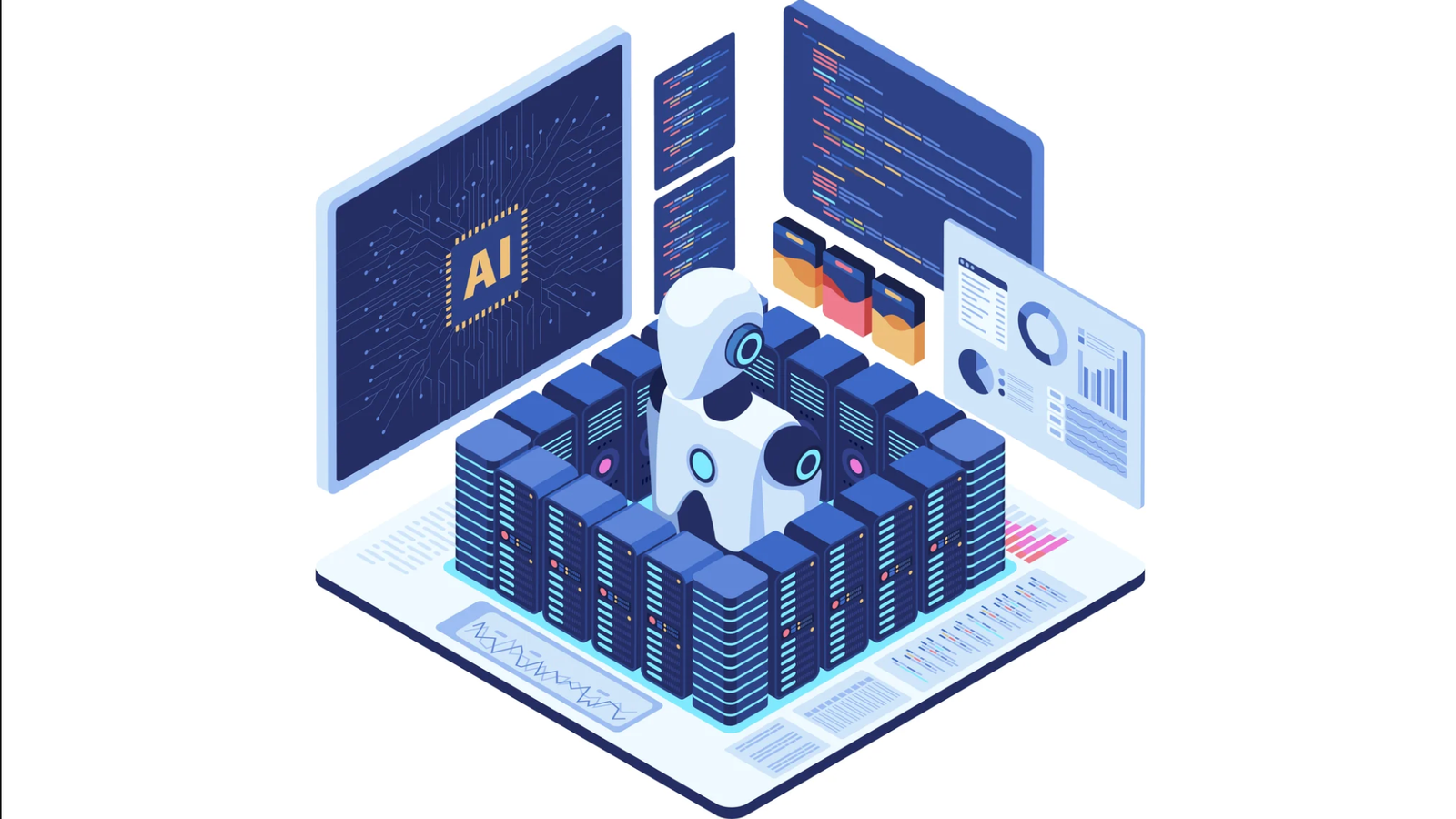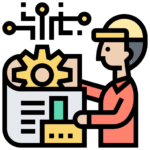AI Tool
Google AI Studio: Your Ultimate Guide to Prototyping the Future of AI 🚀

In the rapidly evolving landscape of artificial intelligence, having the right tools to experiment, innovate, and build is paramount. Enter Google AI Studio, a powerful, web-based platform designed to be your creative sandbox for generative AI. Whether you’re a seasoned developer, a curious creative, a student taking your first steps into AI, or a business leader looking to harness the power of large language models (LLMs), Google AI Studio provides an accessible and intuitive environment to bring your ideas to life.
This in-depth guide will walk you through every facet of Google AI Studio. We’ll explore its core functionalities, dive deep into the revolutionary Gemini models that power it, showcase inspiring use cases, and provide a clear roadmap for getting started. Fasten your seatbelt as we embark on a journey into the heart of user-friendly AI development.
What Exactly is Google AI Studio? 🤔
At its core, Google AI Studio is a free, web-based development environment that allows you to quickly prototype and experiment with Google’s latest and most powerful generative AI models. Think of it as a direct line to the cutting-edge technology emerging from Google DeepMind, including the groundbreaking Gemini family of models.
Launched in late 2023, its primary goal is to democratize access to sophisticated AI.[1][5] It removes the traditional barriers of complex setup and coding requirements, offering an interactive, prompt-based interface where you can test ideas, refine AI responses, and even build custom applications with minimal friction.[1][6] The platform is designed for everyone, from developers who want to test an API before integration to non-technical users eager to explore the potential of generative AI
What makes Google AI Studio so compelling is its immediacy. You can sign in with your Google account and, within seconds, start interacting with state-of-the-art AI, making it the fastest way to begin building with the Gemini API.
Who is Google AI Studio For? 🧑💻👩🎨👨🏫
The beauty of Google AI Studio lies in its broad appeal. It’s a versatile platform that caters to a diverse audience, each finding unique value in its offerings.
- For Developers: It’s the ultimate prototyping tool. Before writing a single line of production code, developers can use AI Studio to experiment with different prompts, fine-tune model parameters, and see how the Gemini models will behave for their specific application. Once a prompt is perfected, you can instantly get the code in your preferred language to integrate into your app.
- For Prompt Engineers & Creatives: This is your playground. Writers, marketers, artists, and content creators can use the intuitive interface to generate text, draft emails, create stunning images, summarize complex articles, and even script dialogues for videos.
- For Students & Educators: It’s a powerful, free learning tool. Students can use it as a personal tutor, getting explanations on complex topics by feeding the model videos and notes. Educators can create lesson plans, generate quiz questions, or even build small educational apps.
- For Businesses & Startups: It offers a low-risk way to explore AI integration. Businesses can prototype AI-powered features like customer service chatbots or internal knowledge base search tools without a significant upfront investment in infrastructure or specialized expertise.
Getting Started: Your First Steps into AI Studio
Embarking on your AI Studio journey is incredibly straightforward. Here’s how you can get up and running in minutes:
- Access the Platform: Simply navigate to the Google AI Studio website (aistudio.google.com).
- Sign In: You’ll be prompted to sign in with your existing Google account.
- Explore the Interface: Once logged in, you’ll be greeted by a clean and organized interface. Key areas include the central prompt area where you’ll interact with the AI, a left sidebar to start new prompts or view your history, and a right sidebar for selecting models and adjusting their settings.
That’s it! You are now ready to start creating. The platform is designed to be intuitive, encouraging exploration and experimentation from the get-go.
Your First Prompt: A Conversation with Gemini
The easiest way to begin is by creating a Chat Prompt. This mode is optimized for conversational experiences where the AI remembers the context of the back-and-forth dialogue.[6]
You can simply start typing a question or a command into the prompt box. For instance, try asking it to “write a short poem about the planet Jupiter.” You’ll witness the model generating a response in real time. You can then continue the conversation, asking it to “make it funnier” or “rewrite it from the perspective of one of its moons,” and the AI will adapt based on the ongoing dialogue.[6]
The Powerhouse Within: Exploring the Gemini Models 💎
The magic behind Google AI Studio is the Gemini model suite, Google’s most capable and versatile AI family to date. Gemini is natively multimodal, meaning it’s designed from the ground up to understand, process, and combine different types of information seamlessly—including text, code, images, audio, and video.
Within AI Studio, you have the ability to switch between different models to best suit your task.[2] These may include:
- Gemini Pro: The highly capable, all-around model optimized for a wide range of text and multimodal tasks.[16]
- Gemini Flash: A lighter, faster model that is more cost-efficient and excels at high-frequency tasks where speed is critical.[17]
- Experimental Models: Google often makes its latest experimental models available in AI Studio, giving users a sneak peek at next-generation capabilities like advanced image generation or enormous context windows (up to 2 million tokens!).[2][8]
This ability to select your model allows for incredible flexibility, whether you need raw power for complex reasoning or lightning-fast responses for a real-time application.[2]
Unpacking the Core Features of Google AI Studio
Beyond a simple chat interface, AI Studio is packed with features that give you granular control over the AI’s output.
1. Multimodal Capabilities 🖼️🔊📹
This is where AI Studio truly shines. You aren’t limited to just text. You can upload various file types to use as context for your prompts:[2]
- Images: Upload a picture of a landmark and ask the AI to write a history about it.
- Audio: Provide an audio file of a meeting and ask for a detailed summary and a list of action items.
- Video: Share a YouTube video link and have AI Studio generate a transcript, summary, or even a quiz based on its content.[11][18]
- Google Drive Integration: Seamlessly connect to your Google Drive to pull in documents, spreadsheets, and other files directly into your prompt.[2]
2. Diverse Prompting Interfaces
AI Studio offers several ways to structure your prompts, designed for different use cases:[6][19]
- Freeform Prompts: A blank canvas for open-ended creative tasks like writing stories, brainstorming ideas, or generating marketing copy.
- Structured Prompts: Ideal for when you need the AI to follow a specific format. You create a table with examples of inputs and desired outputs, and the model learns to replicate that structure for new inputs. This is perfect for tasks like data classification or generating product descriptions in a consistent style.[18]
- Chat Prompts: As mentioned, this is for building conversational experiences like chatbots or virtual assistants where dialogue history is key.[6]
3. Fine-Tuning Your AI with Model Settings ⚙️
On the right side of the interface, you’ll find the “Run settings” panel. This is your command center for controlling the AI’s personality and behavior.[15]
- Model Selection: Choose the Gemini model you want to use.[2]
- Temperature: This setting controls the randomness or “creativity” of the output.[14] A lower temperature (e.g., 0.2) results in more deterministic and factual responses, while a higher temperature (e.g., 0.9) encourages more creative and diverse answers.
- Top-P & Top-K: These parameters also influence the model’s word selection, providing alternative ways to control randomness.
- Safety Settings: You can adjust the filters for harmful content, allowing for more nuanced control depending on your use case.[14]
4. Advanced Tools for Developers
For those looking to build more complex applications, AI Studio provides powerful extensions:[15]
- Structured Output: Force the AI to respond in a specific format like JSON, ensuring the output can be reliably processed by another program.[15]
- Function Calling: This incredible feature allows the AI to interact with external tools or APIs that you define. For example, you could give the AI the ability to fetch live weather data or check real-time stock prices.
- Grounding with Google Search: Connect the model to Google Search to improve factual accuracy on recent events and reduce the chance of the AI generating incorrect information (known as “hallucinations”).[15]
From Prototype to Production: Getting Your API Key 🔑
One of the most powerful workflows in AI Studio is the seamless transition from experimentation to integration.[6] Once you have crafted the perfect prompt and are satisfied with the AI’s performance, you can take that logic and build it into your own application using the Gemini API.
Getting an API key is a simple process done directly within AI Studio:
- Click the “Get API Key” button, typically located in the left panel.[20]
- You may be asked to create a new Google Cloud project or select an existing one.[21]
- An API key—a unique string of characters—will be generated for you.[20]
This key acts as your secure credential to use the Gemini models in your own code.[22] When you click the “Get code” button in the AI Studio interface, it provides you with ready-to-use code snippets (in Python, JavaScript, Node.js, and more) with your prompt already embedded. Simply insert your API key, and you have a working application.[6][21]
Real-World Use Cases: What Can You Build? 💡
The possibilities with Google AI Studio are vast and limited only by your imagination. Here are some concrete examples of what you can create:
- Personalized Customer Support Bots: Tune a chat model with your company’s product documentation to create a chatbot that can answer customer questions accurately and in your brand’s voice.[6][13]
- Automated Content Creation: Generate blog posts, social media updates, and email newsletters by providing the AI with a topic and a few key points.[2]
- Coding Assistant: Paste a snippet of code and ask the AI to debug it, explain it, or even translate it into another programming language.[2]
- No-Code App Builder: Use the “Build” section to describe an app you want to create, and Gemini can code a functional prototype for you, which you can then deploy.[11] This has been used to create everything from persona generators to contract analyzers.
- Educational Tools: Build a “Meeting Tasks Dashboard” that takes a meeting transcript and automatically generates a summary, topics discussed, and a list of action items.[11]
- Creative Voiceovers and Podcasts: Use the text-to-speech (TTS) features to generate high-quality audio. You can even create dialogues with multiple AI voices for scripts or podcasts.[23][24]
Google AI Studio vs. Vertex AI: Which Platform is Right for You?
As you explore Google’s AI ecosystem, you’ll inevitably encounter Vertex AI. While both platforms give you access to Gemini models, they serve different primary purposes and audiences.[7][25]
- Google AI Studio is your prototyping sandbox.[1][26] It’s designed for speed, ease of use, and rapid experimentation. It’s the ideal starting point for developers, hobbyists, and those new to AI. Its free tier is generous, making it highly accessible.[2][27]
- Vertex AI is the enterprise-grade, end-to-end MLOps platform.[25][26] It’s built for data scientists and ML engineers who need to build, train, deploy, and manage AI models at scale in a production environment.[7] Vertex AI offers more robust features for security, compliance, data governance, and managing the entire machine learning lifecycle.[26][28]
Think of it this way: You might build and perfect your initial prompt in the user-friendly environment of Google AI Studio. When you’re ready to deploy that feature to millions of users with enterprise-level security and scalability, you would transition your workflow to Vertex AI.[1] The great news is that Google provides a seamless path to migrate between them, so you’re never locked into one choice.[29]
Pricing: Powerful AI That’s Free to Start
One of the most attractive aspects of Google AI Studio is its pricing model. For most users and use cases, Google AI Studio is completely free to use.[2][30] This includes experimenting with the models, creating prompts, and exploring the platform’s features.[27]
When you’re ready to scale your application using the Gemini API, Google offers a generous free tier with rate limits that are often sufficient for many development and small-scale projects.[4] Beyond the free tier, the API operates on a flexible pay-as-you-go plan, where you are billed based on the number of tokens (pieces of words) you process.[31] This model ensures that you only pay for what you use, making it a cost-effective solution for scaling your AI-powered applications.
Frequently Asked Questions (FAQ) about Google AI Studio ❓
Here are answers to some of the most common questions about Google AI Studio.
1. What is Google AI Studio?
Google AI Studio is a free, web-based platform that allows users to quickly prototype and experiment with Google’s latest generative AI models, including the powerful Gemini family. It’s designed as a user-friendly sandbox for developers, creatives, and anyone interested in exploring the capabilities of AI without needing to write complex code or set up a complicated development environment.
2. Who should use Google AI Studio?
Google AI Studio is for everyone! Its intuitive interface makes it accessible to a wide range of users:
- Developers can use it to rapidly prototype AI features and test prompts before integrating the Gemini API into their applications.
- Writers, marketers, and creatives can use it to generate content, brainstorm ideas, and create marketing copy.
- Students and educators can leverage it as a powerful learning and teaching assistant.
- Businesses and entrepreneurs can explore AI use cases and build proof-of-concept applications with minimal risk and investment.
3. How much does Google AI Studio cost?
Experimenting and building within the Google AI Studio web interface is completely free. When you are ready to use the Gemini models in your own applications via the Gemini API, Google offers a generous free tier with usage limits. For projects that need to scale beyond the free tier, it operates on a pay-as-you-go pricing model, where you only pay for the number of tokens you process.
4. What are the Gemini models?
The Gemini models are Google’s most advanced and capable family of AI models. They are natively multimodal, which means they are designed from the ground up to understand, process, and combine different types of information like text, code, images, audio, and video. AI Studio provides access to models like Gemini Pro (for high-quality, general-purpose tasks) and Gemini Flash (a lighter, faster model for high-frequency tasks).
5. What does “multimodal” mean, and how does it work in AI Studio?
Multimodal means the AI can work with more than just text. In Google AI Studio, you can upload various file types directly into your prompt to provide context for the AI. For example, you can:
- Upload an image and ask the AI to describe it or write a story about it.
- Provide an audio file of a meeting and ask for a summary and action items.
- Share a video link and ask for a transcript.
- Connect to Google Drive to use documents and spreadsheets as input.
6. How do I get an API key to use in my own app?
Getting an API key is a simple and integrated process. Inside Google AI Studio, you can click the “Get API Key” button. This will guide you through creating a new Google Cloud project (or selecting an existing one) and will instantly generate a unique API key for you. You can then use this key with the code snippets provided by AI Studio to integrate Gemini’s power into your own websites and applications.
7. What is the difference between Google AI Studio and Vertex AI?
Think of them as serving different stages of the AI development journey:
- Google AI Studio is the prototyping sandbox. It’s built for speed, rapid experimentation, and ease of use. It’s the best place to start exploring ideas and perfecting prompts.
- Vertex AI is the enterprise-grade production platform. It’s designed for data scientists and ML engineers who need to build, deploy, and manage AI models at scale with robust security, governance, and MLOps features.
The workflow is often to start in AI Studio and then move to Vertex AI when you are ready to deploy your application to a large user base.
8. What can I actually build with Google AI Studio?
The possibilities are nearly endless! You can build:
- Custom chatbots for customer service.
- Automated content creation tools for blogs and social media.
- Coding assistants to debug or explain code.
- Educational tools that generate quizzes from notes or videos.
- Internal business tools to summarize meetings or analyze documents.
9. What is “temperature” in the model settings?
The temperature setting allows you to control the randomness or “creativity” of the AI’s response.
- A low temperature (e.g., 0.2) makes the output more focused, predictable, and factual.
- A high temperature (e.g., 0.9) encourages more diverse, creative, and unexpected responses.
10. How do I get started with Google AI Studio?
Getting started is incredibly easy:
- Go to aistudio.google.com.
- Sign in with your Google account.
- Start typing your first prompt in the chat window!
There is no complex software to install, and you can begin interacting with the AI in seconds.
The Future is Bright and Built on AI 🌟
Google AI Studio is more than just a tool; it’s a gateway to the future of artificial intelligence.[5][32] By placing powerful, multimodal models into an intuitive, accessible, and free-to-start platform, Google is empowering a new generation of creators, developers, and innovators.[13][33]
The platform is continuously evolving, with new features, more powerful models, and even more creative capabilities being added regularly.[11] Whether you are looking to automate a routine task, create a revolutionary new application, or simply learn about the cutting edge of AI, Google AI Studio is your launchpad.
So, what are you waiting for? Dive in, start experimenting, and see what you can build. The future is yours to create. ✨
28 thoughts on “Google AI Studio: Your Ultimate Guide to Prototyping the Future of AI 🚀”
Leave a Reply
You must be logged in to post a comment.










Good post! We will be linking to this particularly great post on our site. Keep up the great writing
Thank you so much for your generous comment and for sharing our post on your site — it truly means a lot to us! 🌟 We’re thrilled that you found value in our content. Your support inspires us to keep creating and sharing more meaningful posts. Let’s continue to grow and inspire together! 🙌✨
XEvil 5.0 automatically solve most kind of captchas,
Including such type of captchas: ReCaptcha-2, ReCaptcha v.3, Google captcha, SolveMedia, BitcoinFaucet, Steam, +12000
+ hCaptcha, FC, ReCaptcha Enterprize now supported in new XEvil 6.0!
1.) Fast, easy, precisionly
XEvil is the fastest captcha killer in the world. Its has no solving limits, no threads number limits
2.) Several APIs support
XEvil supports more than 6 different, worldwide known API: 2Captcha, anti-captcha (antigate), rucaptcha.com, DeathByCaptcha, etc.
just send your captcha via HTTP request, as you can send into any of that service – and XEvil will solve your captcha!
So, XEvil is compatible with hundreds of applications for SEO/SMM/password recovery/parsing/posting/clicking/cryptocurrency/etc.
3.) Useful support and manuals
After purchase, you got access to a private tech.support forum, Wiki, Skype/Telegram online support
Developers will train XEvil to your type of captcha for FREE and very fast – just send them examples
4.) How to get free trial use of XEvil full version?
– Try to search in Google “Home of XEvil”
– you will find IPs with opened port 80 of XEvil users (click on any IP to ensure)
– try to send your captcha via 2captcha API ino one of that IPs
– if you got BAD KEY error, just tru another IP
– enjoy! 🙂
– (its not work for hCaptcha!)
WARNING: Free XEvil DEMO does NOT support ReCaptcha, hCaptcha and most other types of captcha!
http://xrumersale.site/
I appreciate you sharing this blog post. Thanks Again. Cool.
I very delighted to find this internet site on bing, just what I was searching for as well saved to fav
XEvil 5.0 automatically solve most kind of captchas,
Including such type of captchas: ReCaptcha v.2, ReCaptcha-3, Google, Solve Media, BitcoinFaucet, Steam, +12k
+ hCaptcha, FC, ReCaptcha Enterprize now supported in new XEvil 6.0!
1.) Fast, easy, precisionly
XEvil is the fastest captcha killer in the world. Its has no solving limits, no threads number limits
2.) Several APIs support
XEvil supports more than 6 different, worldwide known API: 2captcha.com, anti-captchas.com (antigate), RuCaptcha, DeathByCaptcha, etc.
just send your captcha via HTTP request, as you can send into any of that service – and XEvil will solve your captcha!
So, XEvil is compatible with hundreds of applications for SEO/SMM/password recovery/parsing/posting/clicking/cryptocurrency/etc.
3.) Useful support and manuals
After purchase, you got access to a private tech.support forum, Wiki, Skype/Telegram online support
Developers will train XEvil to your type of captcha for FREE and very fast – just send them examples
4.) How to get free trial use of XEvil full version?
– Try to search in Google “Home of XEvil”
– you will find IPs with opened port 80 of XEvil users (click on any IP to ensure)
– try to send your captcha via 2captcha API ino one of that IPs
– if you got BAD KEY error, just tru another IP
– enjoy! 🙂
– (its not work for hCaptcha!)
WARNING: Free XEvil DEMO does NOT support ReCaptcha, hCaptcha and most other types of captcha!
http://xrumersale.site/
CreatBot D600 Pro 2 Industrial 3D Printer is a cutting-edge 3D printing device designed for professionals demanding precision, dependability, and versatility in 3D printing devices. As part of the D600 series, it incorporates a spacious build volume, advanced dual extruder technology, and high-performance features suitable for industrial-scale applications and complex materials.
Overview of the CreatBot D600 Series
The CreatBot D600 Series and D600 Pro establish benchmarks for large format 3D printer solutions. With a build volume of 600 ? 600 ? 600 mm, these industrial 3D printers cater to a broad spectrum of industrial 3D printing demands, from large model prototyping to end-use production. The D600 Pro lineup and the latest D600 Pro2 HS introduce further enhancements in performance and material compatibility.
Main Features and Benefits
Industrial-Grade Large Build Volume
Build volume: 600 ? 600 ? 600 mm
Ideal for large format 3D printing projects and industrial 3D printing
Supports technical materials and complex prototypes
Dual Extrusion and High-Heat Printing
4th generation 1.75mm dual extruders and hotends for multi-material printing
Right and left-side extruder design for flexible printing
Supports high performance 3D materials, including PLA, nylon filament, carbon-fiber, and more
Maximum extruder temperature: up to 420°C (high temperature)
Heated build chamber for premium applications
Accuracy, Speed & Dependability
Professional 3d print quality with accurate layer resolution
Advanced motion system for fast printing and robust performance
Consistent print speed up to 120 mm/s
Reliable operation for continuous industrial use
Supported Materials and Filaments
Broad Filament Support
Works with a broad spectrum of filament types: PLA, ABS, PC, PETG, PVA, nylon, carbon fiber, and more
Designed for technical materials and functional prototyping
Advanced dual extruder 3d printer enables multi-material and soluble support printing
Uses: Prototyping & Manufacturing
The CreatBot D600 Pro 2 and D600 Pro serve a diverse set of applications:
Rapid prototyping and large scale 3D printing models
Functional parts for automotive, aerospace, and engineering
Tooling, jigs, and fixtures for industrial production
Art, architecture, and creative projects requiring large industrial 3D printing
Specs
Models: CreatBot D600 Pro 2, D600 Pro, D600
Build size: 600 ? 600 ? 600 mm
Extruders: Dual extruder, 4th generation 1.75mm dual extruders and hotends
Maximum extruder temperature: 420°C
Heated bed: up to 100°C
Filament size: 1.75 mm
Layer resolution: 0.05 – 0.3 mm
Supported filament: PLA, ABS, PC, PETG, PVA, nylon, carbon fiber, engineering-grade materials
Printing speed: up to 120 mm/s
Chamber: Heated, for improved material properties
Control: Touchscreen interface
Supported file types: STL, OBJ, AMF
Comparing D600 Models
Feature Differences
D600: Entry-level industrial large scale 3d printer for basic applications
D600 Pro model: Enhanced with heated chamber, auto bed leveling, and wider material support
D600 Pro 2 (pro version): Adds higher print speed, improved reliability, and HS (high speed) configuration
Additional CreatBot Printers
CreatBot D1000 for even larger build volumes
CreatBot 3D printer includes industrial and professional 3d printer solutions
Frequently Asked Questions (FAQ)
Compatible Materials for CreatBot D600 Pro 2
The D600 Pro 2 is compatible with a wide range of filament types including PLA, ABS, PETG, PC, nylon, carbon fiber, and other engineering-grade materials.
What is the maximum build volume of the D600 Pro 2?
The build volume is 600 ? 600 ? 600 mm, supporting large model and industrial 3d printing needs.
Dual Extruder and High-Temp Support on D600 Pro 2
Yes, it is equipped with dual extruder technology and reaches up to 420°C for high-temperature printing process.
What differentiates the D600 Pro 2 from the D600 Pro?
The Pro Version offers higher print speed, improved reliability, and the new HS (high speed) option.
Conclusion
The CreatBot D600 Pro 2 and the D600 Pro set the benchmark in the industrial 3D printer category. With exceptional build volume, robust dual extruders and hotends, compatibility with engineering-grade materials, and top performance across applications, they empower businesses and engineers to achieve new heights in industrial 3d printing.
[url=https://www.creatbotd6002.com]creatbot d600[/url]
[url=http://www.creatbotd6002.com]dual extruder[/url]
[url=https://www.creatbotd6002.com/dual+extruders+and+hotends]dual extruders and hotends[/url]
[url=http://creatbotd6002.com]industrial 3d[/url]
XEvil 5.0 automatically solve most kind of captchas,
Including such type of captchas: ReCaptcha v.2, ReCaptcha-3, Google captcha, Solve Media, BitcoinFaucet, Steam, +12000
+ hCaptcha, FC, ReCaptcha Enterprize now supported in new XEvil 6.0!
1.) Fast, easy, precisionly
XEvil is the fastest captcha killer in the world. Its has no solving limits, no threads number limits
2.) Several APIs support
XEvil supports more than 6 different, worldwide known API: 2captcha.com, anti-captchas.com (antigate), RuCaptcha, death-by-captcha, etc.
just send your captcha via HTTP request, as you can send into any of that service – and XEvil will solve your captcha!
So, XEvil is compatible with hundreds of applications for SEO/SMM/password recovery/parsing/posting/clicking/cryptocurrency/etc.
3.) Useful support and manuals
After purchase, you got access to a private tech.support forum, Wiki, Skype/Telegram online support
Developers will train XEvil to your type of captcha for FREE and very fast – just send them examples
4.) How to get free trial use of XEvil full version?
– Try to search in Google “Home of XEvil”
– you will find IPs with opened port 80 of XEvil users (click on any IP to ensure)
– try to send your captcha via 2captcha API ino one of that IPs
– if you got BAD KEY error, just tru another IP
– enjoy! 🙂
– (its not work for hCaptcha!)
WARNING: Free XEvil DEMO does NOT support ReCaptcha, hCaptcha and most other types of captcha!
http://xrumersale.site/
XEvil 5.0 automatically solve most kind of captchas,
Including such type of captchas: ReCaptcha v.2, ReCaptcha-3, Google captcha, SolveMedia, BitcoinFaucet, Steam, +12000
+ hCaptcha, FC, ReCaptcha Enterprize now supported in new XEvil 6.0!
1.) Fast, easy, precisionly
XEvil is the fastest captcha killer in the world. Its has no solving limits, no threads number limits
2.) Several APIs support
XEvil supports more than 6 different, worldwide known API: 2captcha.com, anti-captchas.com (antigate), RuCaptcha, DeathByCaptcha, etc.
just send your captcha via HTTP request, as you can send into any of that service – and XEvil will solve your captcha!
So, XEvil is compatible with hundreds of applications for SEO/SMM/password recovery/parsing/posting/clicking/cryptocurrency/etc.
3.) Useful support and manuals
After purchase, you got access to a private tech.support forum, Wiki, Skype/Telegram online support
Developers will train XEvil to your type of captcha for FREE and very fast – just send them examples
4.) How to get free trial use of XEvil full version?
– Try to search in Google “Home of XEvil”
– you will find IPs with opened port 80 of XEvil users (click on any IP to ensure)
– try to send your captcha via 2captcha API ino one of that IPs
– if you got BAD KEY error, just tru another IP
– enjoy! 🙂
– (its not work for hCaptcha!)
WARNING: Free XEvil DEMO does NOT support ReCaptcha, hCaptcha and most other types of captcha!
http://xrumersale.site/
XEvil 6.0 automatically solve most kind of captchas,
Including such type of captchas: ReCaptcha-2, ReCaptcha-3, Google captcha, SolveMedia, BitcoinFaucet, Steam, +12k
+ hCaptcha, FC, ReCaptcha Enterprize now supported in new XEvil 6.0!
1.) Fast, easy, precisionly
XEvil is the fastest captcha killer in the world. Its has no solving limits, no threads number limits
2.) Several APIs support
XEvil supports more than 6 different, worldwide known API: 2captcha.com, anti-captcha (antigate), RuCaptcha, death-by-captcha, etc.
just send your captcha via HTTP request, as you can send into any of that service – and XEvil will solve your captcha!
So, XEvil is compatible with hundreds of applications for SEO/SMM/password recovery/parsing/posting/clicking/cryptocurrency/etc.
3.) Useful support and manuals
After purchase, you got access to a private tech.support forum, Wiki, Skype/Telegram online support
Developers will train XEvil to your type of captcha for FREE and very fast – just send them examples
4.) How to get free trial use of XEvil full version?
– Try to search in Google “Home of XEvil”
– you will find IPs with opened port 80 of XEvil users (click on any IP to ensure)
– try to send your captcha via 2captcha API ino one of that IPs
– if you got BAD KEY error, just tru another IP
– enjoy! 🙂
– (its not work for hCaptcha!)
WARNING: Free XEvil DEMO does NOT support ReCaptcha, hCaptcha and most other types of captcha!
http://xrumersale.site/
Brother, you are spamming. This is very bad. If you do this, I will be forced to delete all your comments.
Модель Submariner от выпущенная в 1954 году стала первыми водонепроницаемыми часами , выдерживающими глубину до 100 метров .
Часы оснащены 60-минутную шкалу, Oyster-корпус , обеспечивающие герметичность даже в экстремальных условиях.
Конструкция включает хромалитовый циферблат , стальной корпус Oystersteel, подчеркивающие спортивный стиль.
rolex-submariner-shop.ru
Механизм с запасом хода до 70 часов сочетается с автоматическим калибром , что делает их идеальным выбором для активного образа жизни.
С момента запуска Submariner стал символом часового искусства, оцениваемым как коллекционеры .
XEvil 5.0 automatically solve most kind of captchas,
Including such type of captchas: ReCaptcha-2, ReCaptcha v.3, Google, SolveMedia, BitcoinFaucet, Steam, +12000
+ hCaptcha, FC, ReCaptcha Enterprize now supported in new XEvil 6.0!
1.) Fast, easy, precisionly
XEvil is the fastest captcha killer in the world. Its has no solving limits, no threads number limits
2.) Several APIs support
XEvil supports more than 6 different, worldwide known API: 2captcha.com, anti-captcha (antigate), rucaptcha.com, death-by-captcha, etc.
just send your captcha via HTTP request, as you can send into any of that service – and XEvil will solve your captcha!
So, XEvil is compatible with hundreds of applications for SEO/SMM/password recovery/parsing/posting/clicking/cryptocurrency/etc.
3.) Useful support and manuals
After purchase, you got access to a private tech.support forum, Wiki, Skype/Telegram online support
Developers will train XEvil to your type of captcha for FREE and very fast – just send them examples
4.) How to get free trial use of XEvil full version?
– Try to search in Google “Home of XEvil”
– you will find IPs with opened port 80 of XEvil users (click on any IP to ensure)
– try to send your captcha via 2captcha API ino one of that IPs
– if you got BAD KEY error, just tru another IP
– enjoy! 🙂
– (its not work for hCaptcha!)
WARNING: Free XEvil DEMO does NOT support ReCaptcha, hCaptcha and most other types of captcha!
La gamme MARQ® de Garmin incarne l’excellence horlogère avec des matériaux premium comme le titane Grade-5 et capteurs multisports.
Adaptée aux activités variées, elle propose une polyvalence et durabilité extrême, idéale pour les aventures en extérieur grâce à ses modes sportifs.
Grâce à son autonomie allant jusqu’à 6 heures , cette montre s’impose comme une solution fiable , même lors de activités exigeantes.
https://garmin-boutique.com/fenix-5
Les fonctions de santé incluent la surveillance du sommeil , accompagnées de notifications intelligentes , pour les amateurs de fitness .
Intuitive à utiliser, elle s’intègre à votre quotidien , avec une interface tactile réactive et synchronisation sans fil.
Эта платформа собирает свежие информационные статьи разных сфер.
Здесь можно найти события из жизни, культуре и разнообразных темах.
Контент пополняется почти без перерывов, что позволяет следить за происходящим.
Простой интерфейс помогает быстро ориентироваться.
https://ekbtoday.ru
Каждая статья проходят проверку.
Мы стремимся к объективности.
Оставайтесь с нами, чтобы быть в центре внимания.
Наш ресурс размещает актуальные новостные материалы со всего мира.
Здесь вы легко найдёте события из жизни, науке и разнообразных темах.
Новостная лента обновляется регулярно, что позволяет следить за происходящим.
Понятная навигация помогает быстро ориентироваться.
https://omskdaily.ru
Любой материал оформлены качественно.
Мы стремимся к информативности.
Оставайтесь с нами, чтобы быть всегда информированными.
XEvil 5.0 automatically solve most kind of captchas,
Including such type of captchas: ReCaptcha v.2, ReCaptcha v.3, Google, SolveMedia, BitcoinFaucet, Steam, +12k
+ hCaptcha, FC, ReCaptcha Enterprize now supported in new XEvil 6.0!
1.) Fast, easy, precisionly
XEvil is the fastest captcha killer in the world. Its has no solving limits, no threads number limits
2.) Several APIs support
XEvil supports more than 6 different, worldwide known API: 2Captcha, anti-captcha (antigate), RuCaptcha, death-by-captcha, etc.
just send your captcha via HTTP request, as you can send into any of that service – and XEvil will solve your captcha!
So, XEvil is compatible with hundreds of applications for SEO/SMM/password recovery/parsing/posting/clicking/cryptocurrency/etc.
3.) Useful support and manuals
After purchase, you got access to a private tech.support forum, Wiki, Skype/Telegram online support
Developers will train XEvil to your type of captcha for FREE and very fast – just send them examples
4.) How to get free trial use of XEvil full version?
– Try to search in Google “Home of XEvil”
– you will find IPs with opened port 80 of XEvil users (click on any IP to ensure)
– try to send your captcha via 2captcha API ino one of that IPs
– if you got BAD KEY error, just tru another IP
– enjoy! 🙂
– (its not work for hCaptcha!)
WARNING: Free XEvil DEMO does NOT support ReCaptcha, hCaptcha and most other types of captcha!
http://xrumersale.site/
Dxd Global | Development dxd global, global dxd, deluxe bilisim, deluxe global, IT solutions, web developer, worpress global, wordpress setup
XEvil 5.0 automatically solve most kind of captchas,
Including such type of captchas: ReCaptcha v.2, ReCaptcha-3, Google captcha, Solve Media, BitcoinFaucet, Steam, +12000
+ hCaptcha, FC, ReCaptcha Enterprize now supported in new XEvil 6.0!
1.) Fast, easy, precisionly
XEvil is the fastest captcha killer in the world. Its has no solving limits, no threads number limits
2.) Several APIs support
XEvil supports more than 6 different, worldwide known API: 2Captcha, anti-captchas.com (antigate), RuCaptcha, death-by-captcha, etc.
just send your captcha via HTTP request, as you can send into any of that service – and XEvil will solve your captcha!
So, XEvil is compatible with hundreds of applications for SEO/SMM/password recovery/parsing/posting/clicking/cryptocurrency/etc.
3.) Useful support and manuals
After purchase, you got access to a private tech.support forum, Wiki, Skype/Telegram online support
Developers will train XEvil to your type of captcha for FREE and very fast – just send them examples
4.) How to get free trial use of XEvil full version?
– Try to search in Google “Home of XEvil”
– you will find IPs with opened port 80 of XEvil users (click on any IP to ensure)
– try to send your captcha via 2captcha API ino one of that IPs
– if you got BAD KEY error, just tru another IP
– enjoy! 🙂
– (its not work for hCaptcha!)
WARNING: Free XEvil DEMO does NOT support ReCaptcha, hCaptcha and most other types of captcha!
Нужно собрать информацию о пользователе? Этот бот предоставит детальный отчет в режиме реального времени .
Воспользуйтесь продвинутые инструменты для поиска цифровых следов в соцсетях .
Выясните контактные данные или активность через систему мониторинга с верификацией результатов.
актуальный глаз бога
Бот работает с соблюдением GDPR, используя только открытые данные .
Получите расширенный отчет с геолокационными метками и списком связей.
Доверьтесь проверенному решению для исследований — точность гарантирована!
Suteikiame trumpalaikes, vidutines trukmes ir ilgalaikes paskolas. Visu rusiu paskolos ir investicijos. Del visu savo paskolos poreikiu bet kokio tipo susisiekite su manimi. El pastas: maria.filicetti@outlook.com Arba whatsapp: wa.me/+33647072050
XEvil 5.0 automatically solve most kind of captchas,
Including such type of captchas: ReCaptcha-2, ReCaptcha-3, Google, SolveMedia, BitcoinFaucet, Steam, +12k
+ hCaptcha, FC, ReCaptcha Enterprize now supported in new XEvil 6.0!
1.) Fast, easy, precisionly
XEvil is the fastest captcha killer in the world. Its has no solving limits, no threads number limits
2.) Several APIs support
XEvil supports more than 6 different, worldwide known API: 2Captcha, anti-captcha (antigate), RuCaptcha, death-by-captcha, etc.
just send your captcha via HTTP request, as you can send into any of that service – and XEvil will solve your captcha!
So, XEvil is compatible with hundreds of applications for SEO/SMM/password recovery/parsing/posting/clicking/cryptocurrency/etc.
3.) Useful support and manuals
After purchase, you got access to a private tech.support forum, Wiki, Skype/Telegram online support
Developers will train XEvil to your type of captcha for FREE and very fast – just send them examples
4.) How to get free trial use of XEvil full version?
– Try to search in Google “Home of XEvil”
– you will find IPs with opened port 80 of XEvil users (click on any IP to ensure)
– try to send your captcha via 2captcha API ino one of that IPs
– if you got BAD KEY error, just tru another IP
– enjoy! 🙂
– (its not work for hCaptcha!)
WARNING: Free XEvil DEMO does NOT support ReCaptcha, hCaptcha and most other types of captcha!
Try the best Aviator game app in India – fast, secure, exciting
Explore the world of BitStarz, claim your welcome bonus of 5 BTC and 180 free spins, awarded Best Casino multiple times. Stay connected through official mirror.
Odpovědná hra znamená kontrolu nad vlastními návyky , aby se minimalizovalo riziko závislosti a zároveň se uchovala zábavní hodnota.
Platformy umožňují nastavit denní týdenní nebo měsíční limity , což pomáhá hráčům udržet časovou míru.
Každý hráč by měl sledovat příznaky rizikového chování, jako jsou pokusy o návrat prohraných prostředků.
mostbet legal
Online kasina jsou povinna ověřovat věk uživatelů , aby chránila mladistvé před nežádoucím vlivem.
V případě potřeby lze využít linků na terapii , které pomáhají při překonání hráčské vášně.
Master the game with this aviator game review
Dxd Global | Development dxd global, global dxd, deluxe bilisim, deluxe global, IT solutions, web developer, worpress global, wordpress setup
Bypass blocks and win big with casino mirror